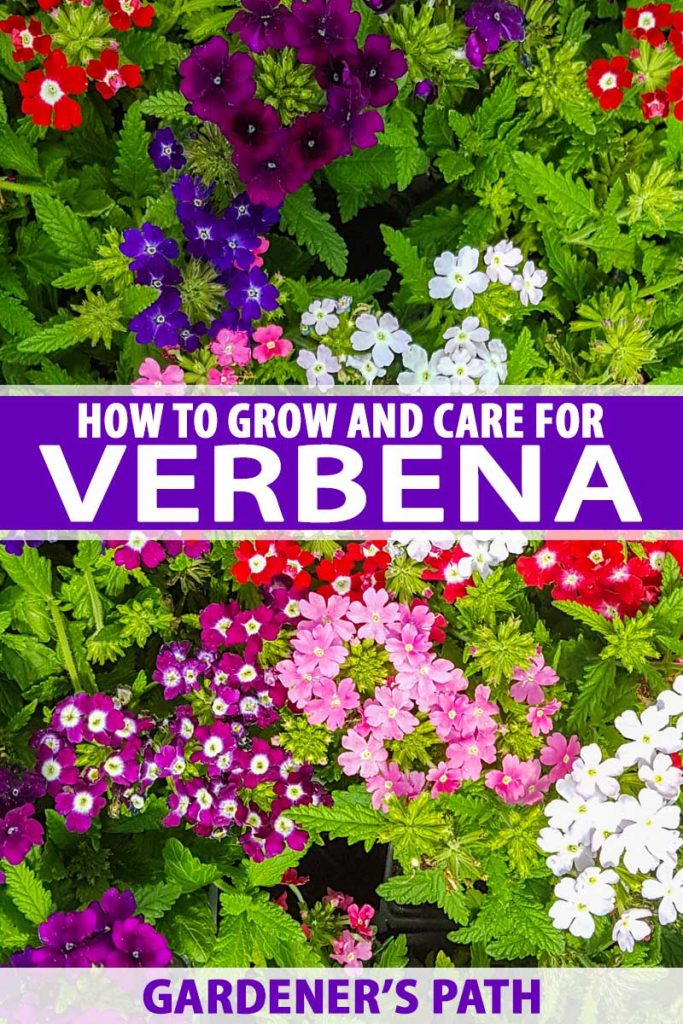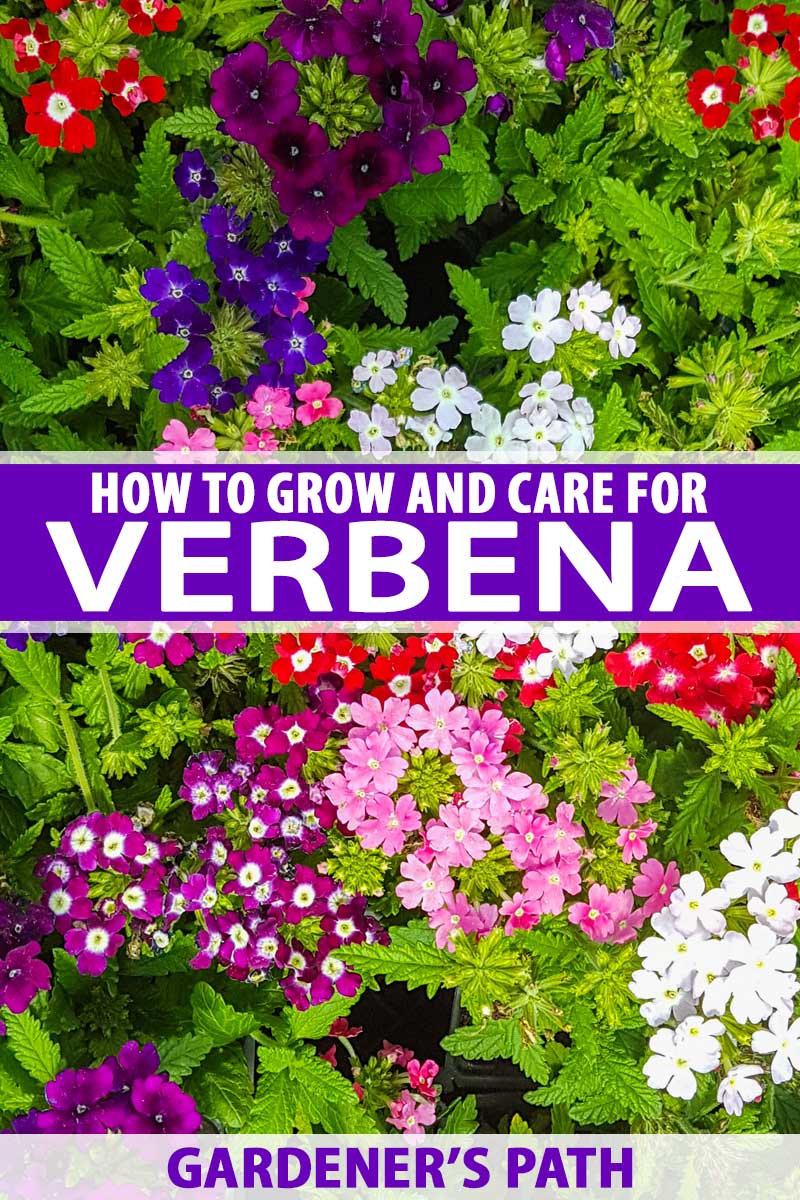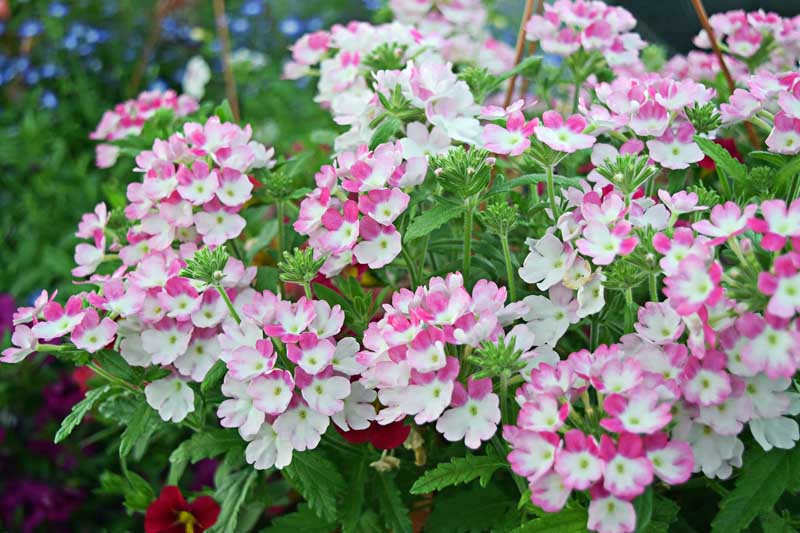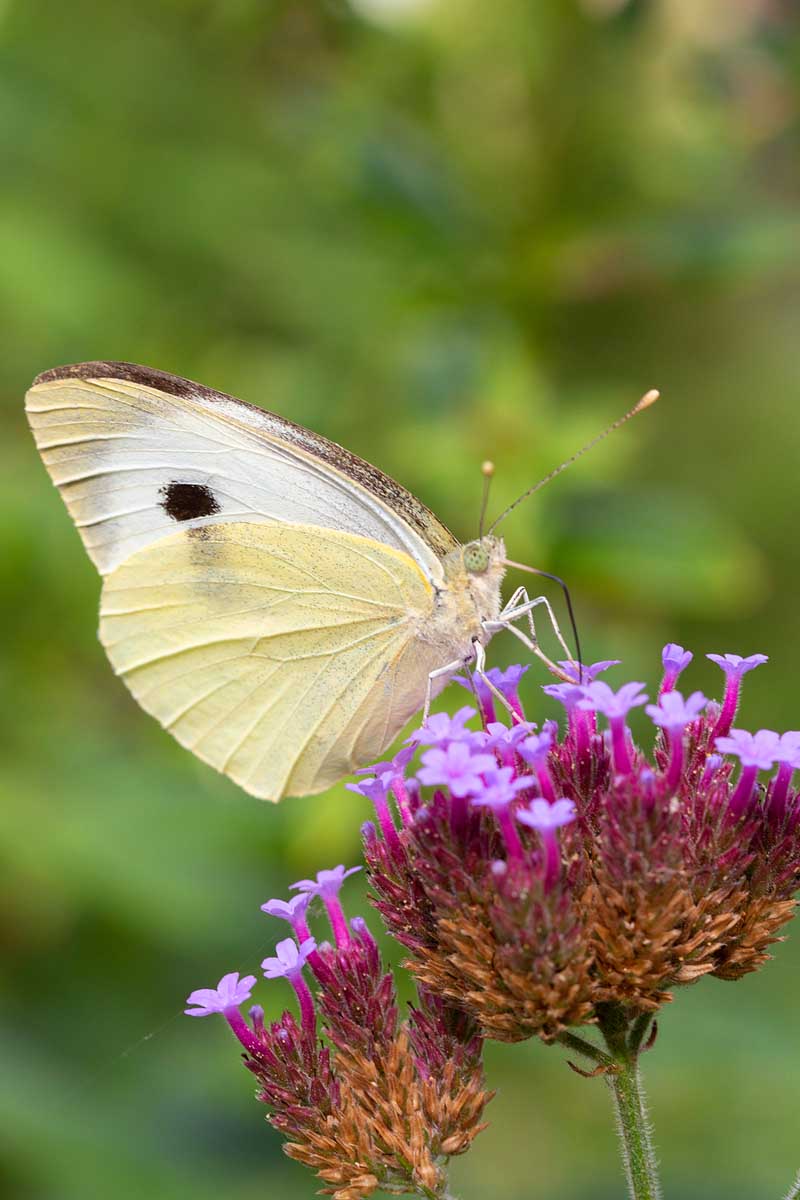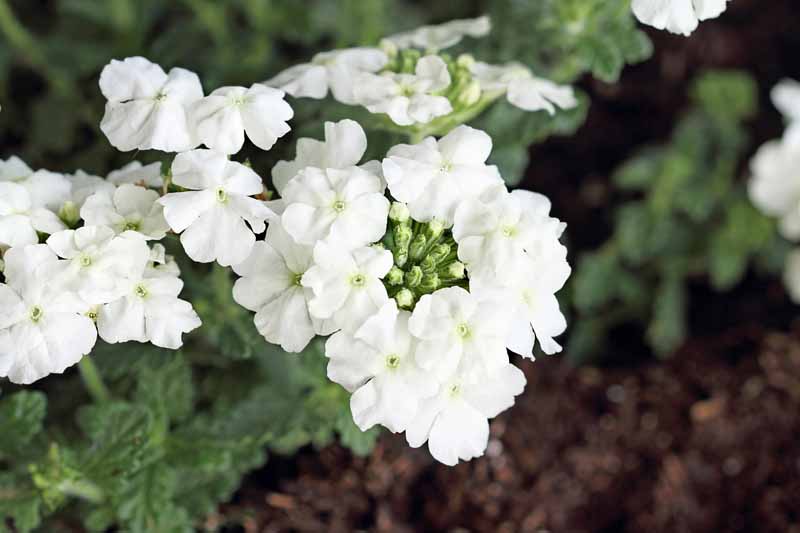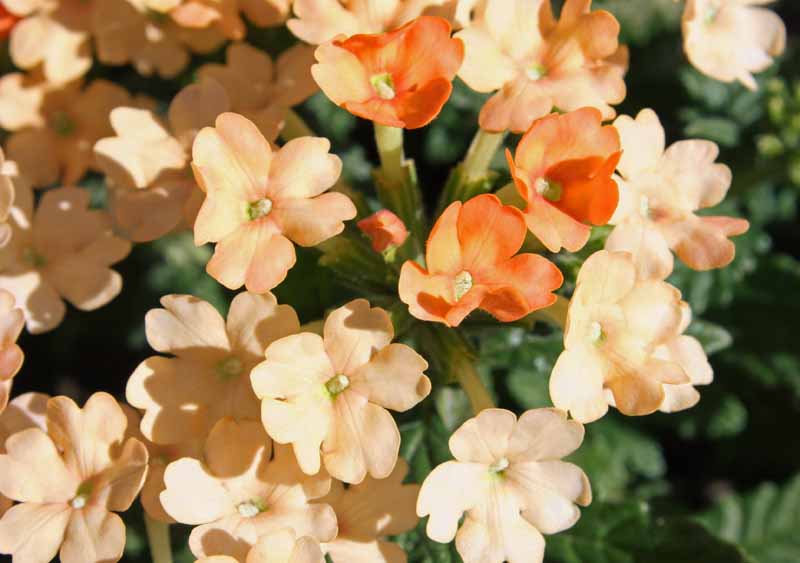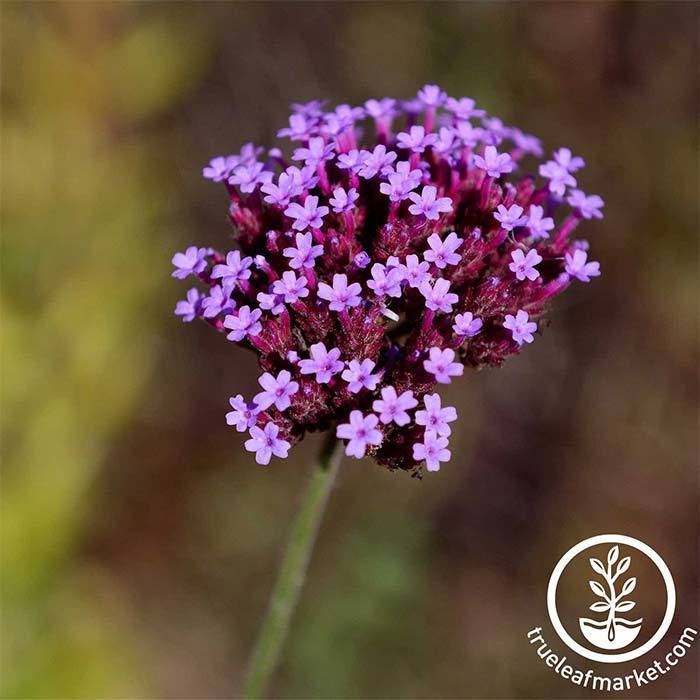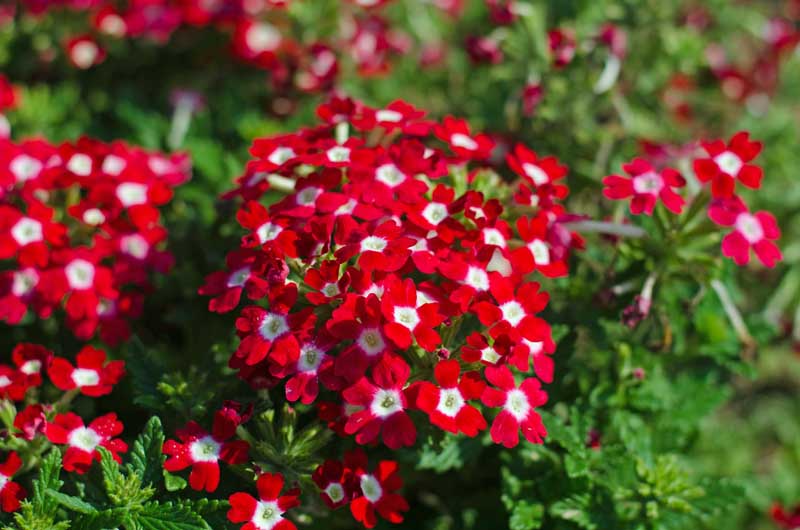I was working at a garden center many years ago and discovered quickly the shoulder pain incurred from watering over one hundred hanging baskets at a time, especially for one particular flower. Verbena was a troublemaker as far as I was concerned, a flower that refused to stay attractive unless I babied it. Flash forward years later and I recognize that, yes, this flower does need a bit of extra care to be at its best, but not that much. We link to vendors to help you find relevant products. If you buy from one of our links, we may earn a commission.
Verbena Basics
“Tears of Isis” is a nickname for verbena and probably one of the coolest common flower names I’ve ever seen. Although the flower is native to the Americas and to Asia, it is a popular plant around the world.
Images of the flowers have been carved as wards and talismans against the evil eye, and the plants were supposedly used to staunch the wounds of Jesus after his removal from the cross, apocryphal though that may be. Verbena has also been used as an herbal tonic through the years, and in aromatherapy. Verbena can be grown as a perennial or an annual, more commonly as the latter. Brace yourself for some self-seeding craziness; the taller, upright variety has pestered me for this entire summer since it blew into my herb bed!
Best Places to Grow
While some varieties of the flower grow upright and top out at a height of about three feet, most of us are probably familiar with the shorter varieties of verbena available in shades of red, purple, white, blue, and pink. These are perfect as an accent to almost any combination of other annuals.
You’ll find verbena in butterfly gardens as well. All types of pollinators from hummingbirds to butterflies to bees love these clustered flowers and will be regular visitors wherever it is found. These are often used as a filler or a spiller plant in containers but may perk up many areas in the garden too. My favorite use for verbena is to add a red variety with red-and-orange marigolds and some dusty miller. The colors practically bark summertime, but they can pass as fall colors too!
Growing Essentials
Verbena is generally pretty happy-go-lucky. It wants at least six hours of sunlight a day, prefers well-drained soil but isn’t picky about the quality of the soil, and needs about an inch of rain a week.
Those requirements are not unusual for most annuals, but unlike other, tougher plants, verbena does not recover well from lapses in care. Without regular attention it will turn into a burnt-up, flowerless clump of unappealing foliage. Luckily, that extra attention doesn’t take much time out of your gardening schedule. Keep in mind that if you’re growing your flowers in the ground, they’ll require less attention since their roots can “dig deeper” and often solve their own problems, while container-grown plants need much more frequent and regular care since they’re in a more isolated environment.
Careful Watering
Watering is the biggest hangup I’ve seen people experience with these flowering annuals. Too often, the gardener will soak the soil too much and cause the stems of the plant to rot, or they won’t water at all and the once-lush foliage crisps up into something like a breakfast cereal. The best solution is to simply inspect your verbena every day during hot or dry weather. Once the foliage begins to flag (garden speak for turning limp and hanging like a flag on a windless day), it’s time to give it a drink. While an inch of rain a week is a good guideline that can be difficult to measure, an inch of rain during scorching weather isn’t going to be enough to keep the plants happy.
A Good Haircut Here and There
Verbena tends to get pretty leggy as it grows, and this was part of my initial dislike of the plant. But enough time and experience with this annual led me to discover that all it needs to perk right back up is a good shearing a few times a year.
Some sources suggest cutting the plant back twice a season, but I do it more often; I’ve found that removing spent foliage once a month or so is ideal for keeping your flowers in bloom. The amount you remove is dependent on how often you’re doing it. If you cut the spent foliage and flowers back once or twice a year, you can safely remove up to a third of the plant and still expect a flush of new flowers. If you’re cutting it back more often you’ll remove less, maybe a few inches at a time, or just the spent blooms themselves. If your plants are refusing to flower or are grown out and leggy, a quick haircut is the trick to encouraging those blossoms to start forming again. An acceptable level of loss should be something every gardener is aware of simply because our environment is soaked in pesticides and other harmful sprays. If we can let a few aphids dine on our annuals before we start squirting on the chemicals, we’ll be better off for it in the end. I’ll give my plants a boost of Jack’s every two weeks at the directed amount (about 1 tablespoon per gallon). These prolific flowers respond well to a regular meal, so feed ‘em often!
Dealing With Problems
Like most plants, verbena can be susceptible to fungal issues in wet conditions. Avoid this by practicing smart water techniques and encouraging ample air circulation. Use a soaker hose, or water in the morning so plants can dry before nighttime sets in. If your plants do become infected with a fungal problem like powdery mildew, a general-purpose fungicide should do the trick until conditions dry up. Insects seem to cause more trouble for this flower than anything else, and unfortunately the list of potential pests is extensive.
Aphids, caterpillars, gall midges, leaf miners, mealybugs, mites, scale, and whiteflies are the most common annoyances. If you can’t tolerate these pests on your plant, an insecticidal soap can be used, or the suggested fungicide above can be used on insects as well. But before you start spraying, consider that the pests might not be a huge problem. Besides, insects are part of a healthy garden, even if those insects occasionally damage our favorite ornamentals!
Where Can I Buy?
Great question! You’ll be able to find live verbena at almost any garden center during the spring and summer growing season, but starting from seed is a relatively easy process. They can take a long time to flower, with some requiring as many as 90 days, so be patient while waiting for these beauties to open up. Start your seeds indoors about ten weeks or so before the last freeze date. Sow a few seeds per cell or container, and prepare to wait as long as three weeks for them to germinate. Cover the seeds with a light layer of soil; they need darkness to germinate! Once they start popping up, thin the seedlings out once they reach a height of about two inches, choosing the healthiest and strongest seedling per cell to keep. Harden the seedlings off outdoors, and plant them outside when they’re hardy! I like to take a week to harden my seedlings to the outdoor conditions by following this simple schedule:
On Day 1: Keep your seedlings outdoors for an hour and bring them back in. On Day 2: Keep your seedlings outdoors for two hours and bring them back in. On Day 3: Keep your seedlings outdoors for three hours and bring them back in.
Continue this process, adding one hour to their outdoor duration on each day of the week, and by day seven your seedlings should be completely hardened to the outdoors.
Now Get Growing!
Verbena is a lovely flower that demands nothing more than some regular love, and that makes it an excellent addition to the garden beds or containers of the gardener who enjoys tending to their plants, no matter how fussy they are.
Imagination Verbena The plant will reach a height of about sixteen inches. Find them on True Leaf Market.
Bonariensis Verbena
This is a more primitive species of verbena that’s more true to its wild relatives. A favorite in cottage gardens, this drought-tolerant variety will grow as a perennial in zones 7-10. It’s a big attractant of butterflies and bees. Burpee Bonariensis Verbena Seeds It has clusters of small violet-blue flowers with just a few leaves.
Quartz XP
Like a little variety in your life? Check out the ‘Quartz XP’ series. These flowers are far from subtle and demand to be seen – but when they look this good, that’s not a problem!
Quartz XP Series Verbena Seeds They will rarely reach heights taller than a foot. Available in Burgundy Eye, Red with Eye, Scarlet, Silver, White, Blue, or Mix. Find them on True Leaf Market.
You’ll have luck mixing your verbena with marigolds, canna lilies, heliotropes, and other sun-loving annuals, or just throwing it right into your butterfly garden. As long as you’ve got the desire to tend to this little flower when it needs your love, you won’t be disappointed when adding this flower to your garden. And if you enjoyed this guide, check out some our other flower growing guides such as:
How to Grow Verbena in the South or Southwest How to Grow and Care for Gardenia Plants How to Grow Joe-Pye Weed in Your Landscape or Garden
Photo credit: True Leaf Market, Burpee Seed Co, Shutterstock.
